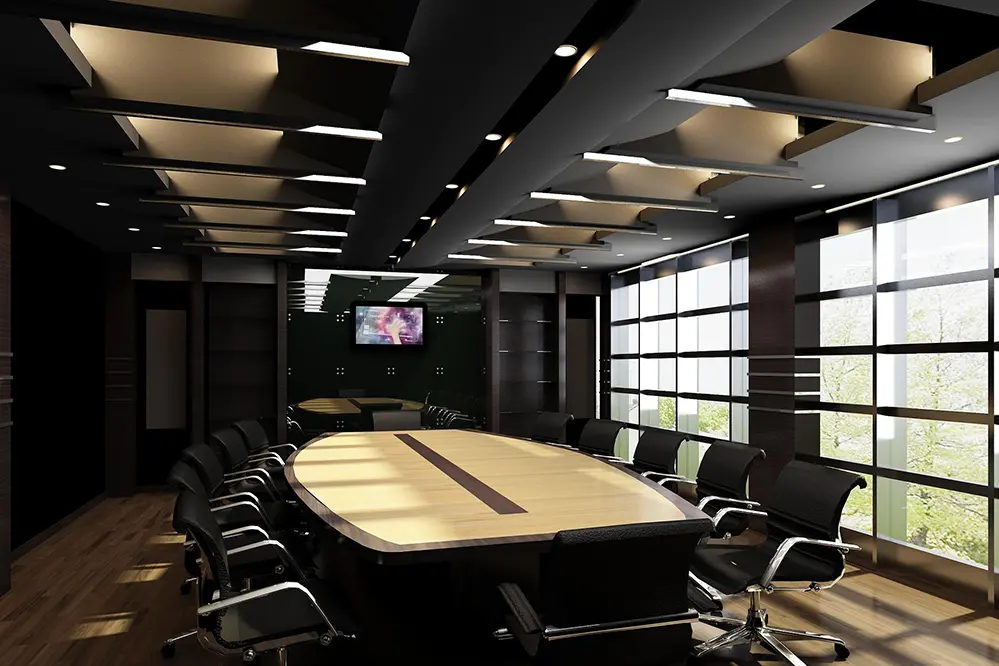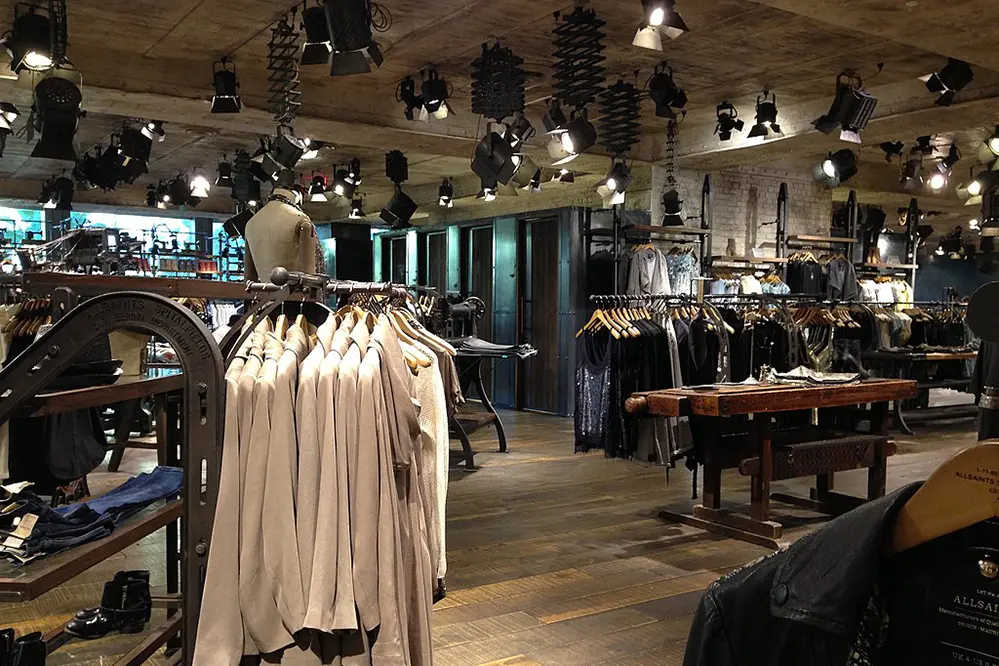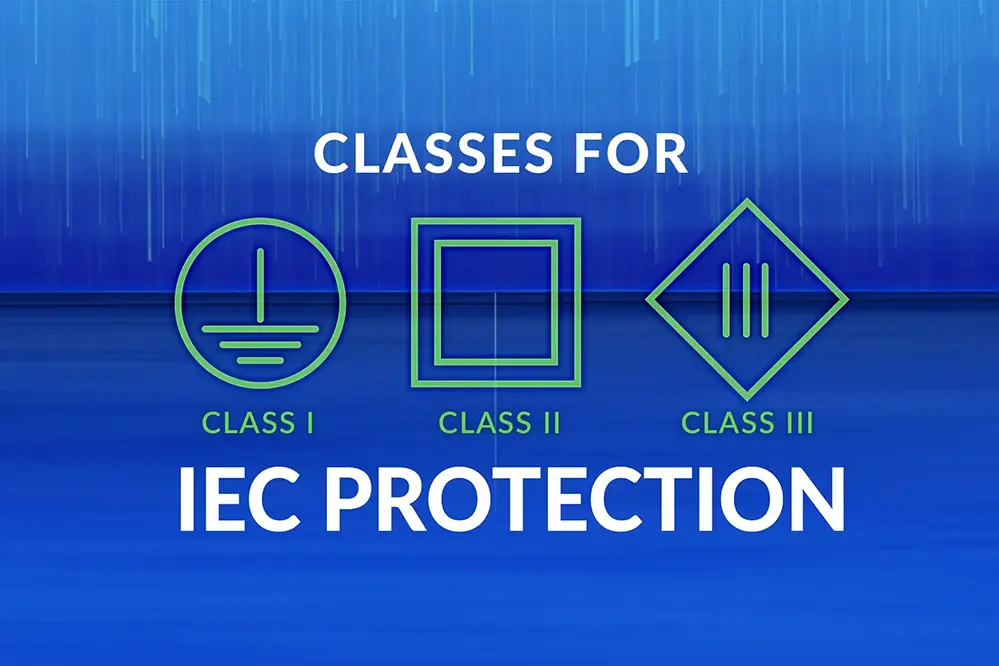Are you wondering if it’s safe to use LED strip lights on fabric? You’re not alone, and we’re here to provide you with a confident and comprehensive answer. With the right approach, you can safely and effectively integrate LED strip lights into your fabric projects.
Integrating LED strip lights onto fabric is both safe and feasible with proper planning, suitable adhesive, adequate ventilation, and regular inspections. The low heat emission of LEDs makes them ideal for creative and secure designs on fabric.
Read on to discover best practices, tips, and innovative ideas to transform your fabric into a stunning illuminated masterpiece.
Introduction to LED Strips and Fabric Use
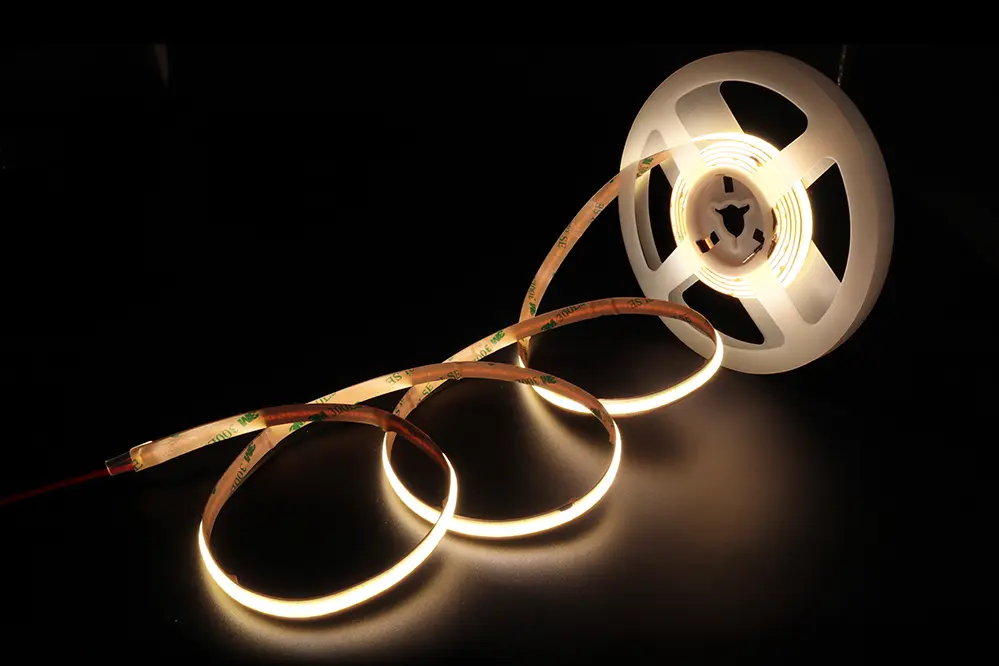
As technology advances, LED strip lights have become increasingly popular for creative projects and interior design.
When considering the application of LED strips to fabric, many may initially question the safety and efficacy of such a venture. However, with proper installation techniques and an understanding of the materials involved, this combination can present a groundbreaking opportunity for design and innovation.
LED strips, known for their energy efficiency and flexibility, can transform ordinary fabric into a luminous spectacle. Advantages include an ambient glow, customizable lighting effects, and the ability to highlight intricate patterns and textures with precision.
Furthermore, understanding the different types of adhesives and fabrics ensures a secure bond, preventing damage to the material while maximizing the LED strip’s performance. By paying close attention to these details and adhering to safety guidelines, one can achieve a stunning visual transformation, whether for personal projects or professional displays.
Benefits of Using LED Strips on Fabric
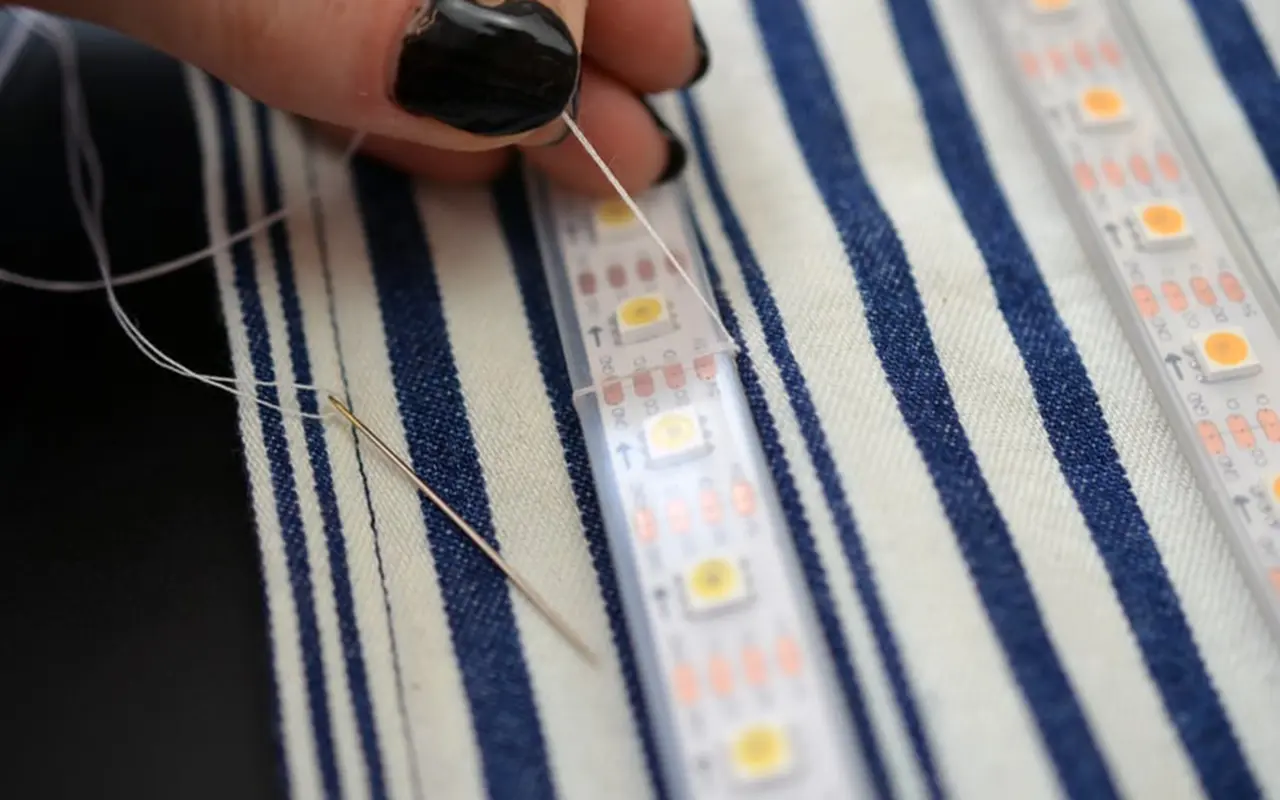
Transforming fabric with LED strips offers an array of advantages, particularly in the realms of aesthetics and functionality.
Firstly, LED strips provide an unparalleled level of customization, allowing any space to be illuminated according to your creative vision. This flexibility means you can highlight specific areas or patterns on the fabric, creating a visually striking display that enhances the overall ambiance of any setting.
Additionally, using LED strips on fabric can be an excellent way to introduce energy-efficient lighting into your decor. LEDs consume significantly less power compared to traditional lighting options, reducing energy costs while still delivering vibrant, long-lasting illumination that can elevate the aesthetic of fabric-based designs.
Lastly, the marriage of LED technology and fabric opens up innovative possibilities in various industries, from fashion to interior design. This integration can result in dazzling garments and decor that captivate audiences, tapping into modern trends and technological advancements that keep your designs on the cutting edge. This blend of creativity and technology not only inspires but also sets the standard for future design innovations.
Types of LED Strip Lights
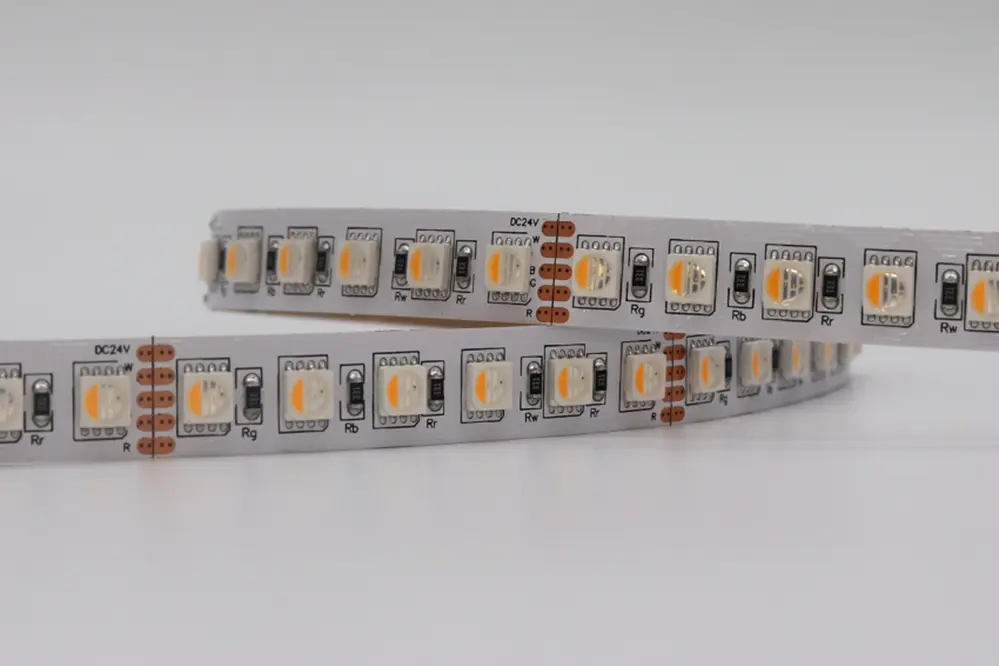
LED strip lights are versatile, offering various options suited for different applications and needs.
One popular type is the standard density strip, ideal for accent lighting due to its moderate brightness. High-density strips, on the other hand, offer greater luminosity, suitable for task lighting or illuminating larger areas.
There are also RGB (Red, Green, Blue) LED strip lights, which can create a spectrum of colors when combined. These strips are perfect for dynamic lighting effects, adding a vibrant and customizable touch to any fabric-based project.
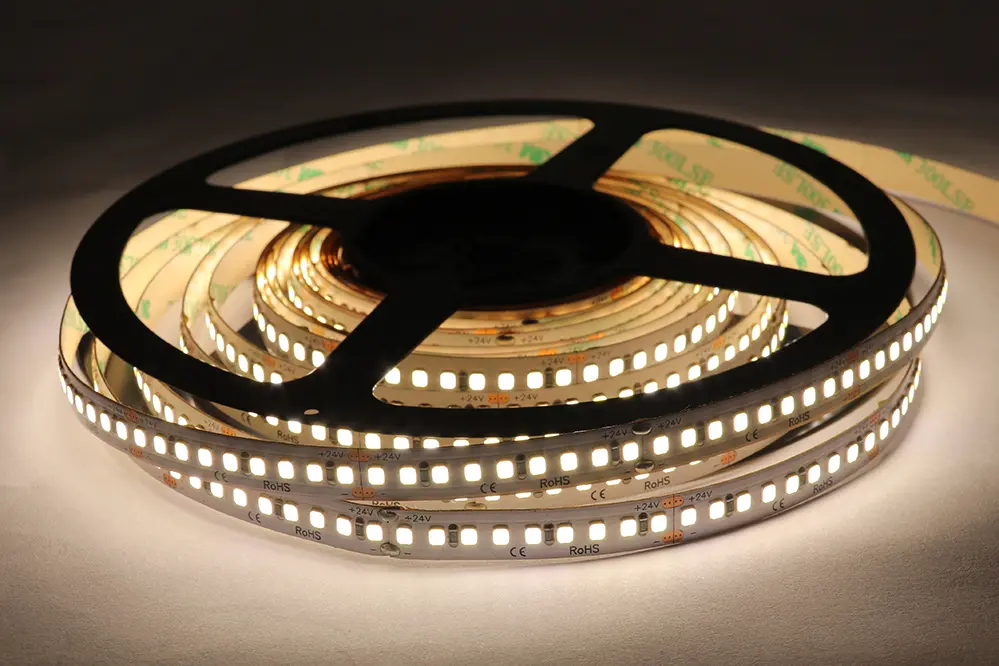
Another innovative option is the addressable LED strip, where individual LEDs can be controlled separately. This allows for intricate lighting patterns and animations, making them excellent for complex design displays on fabric surfaces.
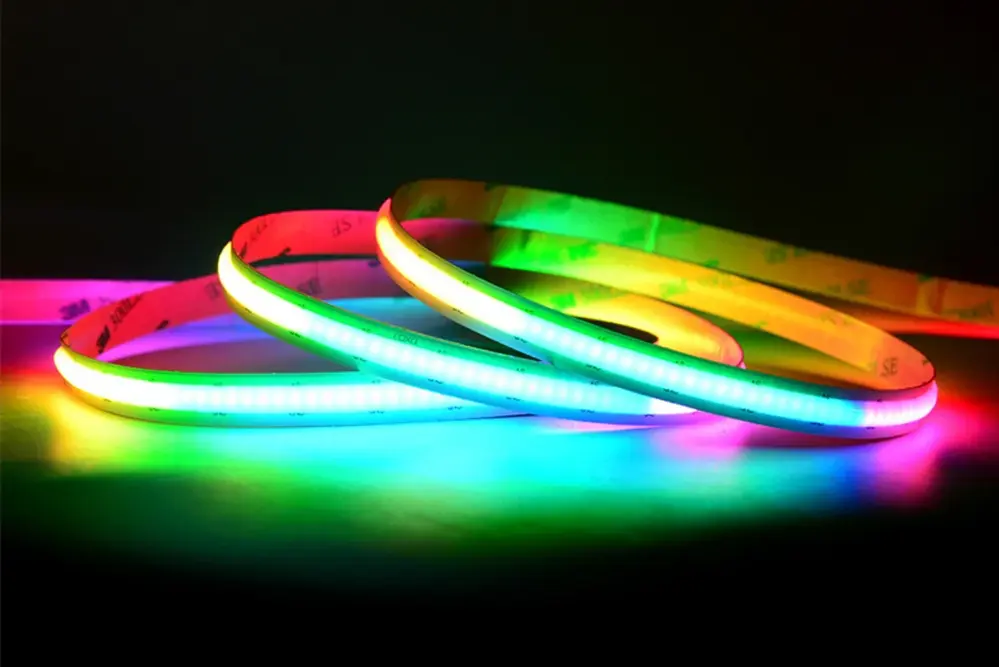
Choosing the right type of LED strip light depends on your specific requirements and the desired effect, ensuring safety and achieving the best results.
Choosing the Right LED Strips for Fabric
Selecting the appropriate LED strips is pivotal.
First and foremost, you should opt for LED strip lights that operate at a low temperature. This is crucial to avoid overheating and potential fabric damage, ensuring the longevity and safety of your fabric-based projects. Additionally, choosing LED strips with a flexible backing is advantageous as they can conform to the fabric’s shape seamlessly.
Prioritize adhesive LED strips.
The self-adhesive strips provide ease of application and remove the need for additional fixing methods. Ensure the adhesive is fabric-friendly, avoiding any residue or damage over time.
Opt for waterproof or moisture-resistant LED strips.
This precaution enhances the durability and safety of the installation, especially if the fabric might come into contact with moisture. Such strips ensure consistent performance without risking electrical issues or fabric damage.
Lastly, consider the color temperature and brightness level. A strip with adjustable brightness is highly beneficial, allowing you to modify the lighting to suit different occasions or needs, ensuring your fabric project always looks its best.
Can You Put LED Strip Lights on Fabric?
Absolutely, you can integrate LED strip lights into fabric designs, offering both flexibility and aesthetic appeal. Adhering to a few key guidelines ensures safety and long-lasting performance.
Make sure the LED strips remain cool to the touch.
LED strips are designed to be energy-efficient, generating minimal heat.
This property makes them suitable for direct contact with fabric materials.
However, avoid using high-heat LED options to protect the fabric.
Properly securing the LED strips to the fabric with fabric-friendly adhesive is essential. This step prevents shifting and ensures a consistent appearance over time.
With careful planning and the right materials, fabric LED installations can be both safe and stunning.
Safety Considerations
When contemplating the integration of LED strip lights on fabric, it is imperative to consider the associated safety factors. Can you put LED strip lights on fabric without compromising safety?
Indeed, you can, but it necessitates a conscientious approach to material selection and installation. High-quality LED strips are designed to minimize heat emission, which is crucial for preventing any damage to delicate fabrics.
Furthermore, utilizing LED strips that have built-in safety features, such as overheat protection, can significantly mitigate any potential risks. Reliable and certified LED strips assure you meet the necessary safety standards.
Proper adhesion plays a vital role in safety, so opt for fabric-compatible adhesives that don’t degrade over time. Securely fastening the strips ensures they remain in place, reducing the likelihood of any accidents.
In summary, with judicious selection and meticulous installation, integrating LED strips into fabric projects can be safe and remarkably effective.
Potential Fire Hazards
When considering LED strip lights on fabric, safety is a paramount concern. Can you put LED strip lights on fabric without facing potential fire hazards?
Recent years, significant research, a critical area of focus, demonstrated that high-quality LED strips generally emit less heat compared to other lighting solutions, thereby reducing the inherent risk. However, it is essential to apply these findings in real-world contexts, considering variations in fabrics and environmental conditions.
Yes, it’s safe if you ensure the LED strip’s voltage is appropriate for the type of fabric in use. Lower voltage strips inherently pose fewer fire risks, especially in settings with more delicate materials.
Choosing the right type of fabric is also crucial. Natural fibers like cotton may be more susceptible to heat damage, while synthetic blends may offer higher resistance. Testing in small, controlled sections can provide critical insights into how the fabric and lights interact.
Adopting strict vigilance and incorporating advanced safety measures can virtually eliminate fire risks.
Heat Management
Efficient heat management is crucial when incorporating LED strip lights on fabric.
Recently, technological advancements, particularly in heat dissipation mechanisms, have significantly mitigated the thermal output of LED strips. This makes them safer for various applications, including those involving fabric.
However, it’s not solely about the LED’s design; it’s equally important to ensure proper ventilation. Adequate air circulation can effectively draw away heat, preventing potential overheating and preserving both the LED strips and the fabric integrity.
For optimal performance, pairing LED strips with heat sinks or thermal barriers can be highly effective. These components enhance heat dispersion, allowing the lights to operate safely for extended durations, even on sensitive materials.
Consistent monitoring of temperature can further ensure safety, providing a reassuring safeguard against unexpected issues.
Ensuring Proper Ventilation
When integrating LED strip lights on fabric, proper ventilation is paramount to maintaining safety and longevity.
Ventilation ensures heat generated from the LED strips dissipates effectively.
An air circulation system can prevent excess heat accumulation, safeguarding fabric from damage and reducing fire risks, ultimately reinforcing the reliability of the installation.
The strategic placement of LED strips in conjunction with ventilated setups can vastly improve heat management. This includes positioning them in areas where airflow can move freely or utilizing fans to circulate air continuously. By doing so, you optimize both performance and safety, thereby ensuring a sustainable and inspiring lighting solution.
Types of Fabrics Suitable for LED Strips
Selecting a suitable fabric for LED strip integration involves balancing durability, heat resistance, and aesthetic appeal. Certain fabrics excel in these domains, providing a harmonized environment for the lights to function effectively and safely.
Natural fibers like cotton and linen are prime candidates due to their breathability. This characteristic aids in heat dispersion, reducing the risk of overheating.
Conversely, synthetic fabrics such as polyester and nylon perform exceptionally well in terms of strength. Their resilience helps in securing LED strips firmly in place.
Also, blends of natural and synthetic fabrics offer a balanced profile. They combine the breathability of natural fibers with the durability of synthetics.
Velvet and other thicker textiles are invaluable for more heavy-duty setups. Their dense structure provides a protective barrier, offering superior reliability and visual appeal.
Ultimately, the type of fabric chosen extends beyond functionality; it’s about elevating the space. Each fabric’s unique traits can enhance the visual and tactile dimensions of illuminated design.
Mounting Methods for LED Strips on Fabric
When integrating LED strip lights with fabric, choosing an appropriate mounting method is critical for both safety and effectiveness.
One approach is using fabric adhesive tapes or a self-adhesive backing on the LED strips, which can adhere directly to the fabric surface, especially in lightweight projects. This option maintains flexibility and allows easy application, decreasing the likelihood of damaging the fabric. However, ensure the adhesive is fabric-safe to avoid any potential damage or discoloration.
Alternatively, Velcro strips offer a removable method to secure the LED lights. By sewing or adhering one side of the Velcro to the fabric and the other to the LED strip, you create a robust yet detachable bond. This method is particularly beneficial for fabric-based installations that require frequent adjustments or cleaning.
Sewing LED strips onto the fabric is another viable method, facilitating long-term stability. Use a zigzag or running stitch with transparent thread or matching thread color to sew over the strip’s edges. This minimizes visibility and maintains the fabric’s aesthetic while ensuring the LED strips remain firmly in place, offering a polished and durable solution.
Adhesive Options
When considering adhesive options for LED strips on fabric, ensure the components meet safety and functional requirements.
Double-sided fabric tape is a simple and effective option that securely bonds the LED strips to your material without causing damage. This method provides a secure hold.
For more enduring applications, hot glue is an excellent choice. It creates a robust bond between the LED strip and the fabric, ensuring long-lasting attachment, ideal for permanent installations.
CAUTION: always use fabric-safe adhesives. This minimizes the risk of damaging sensitive fabrics, safeguarding your project while ensuring durability.
Testing a small, inconspicuous area before fully applying the adhesive helps avoid mishaps and ensures compatibility with your chosen fabric.
Sewing LED Strips onto Fabric
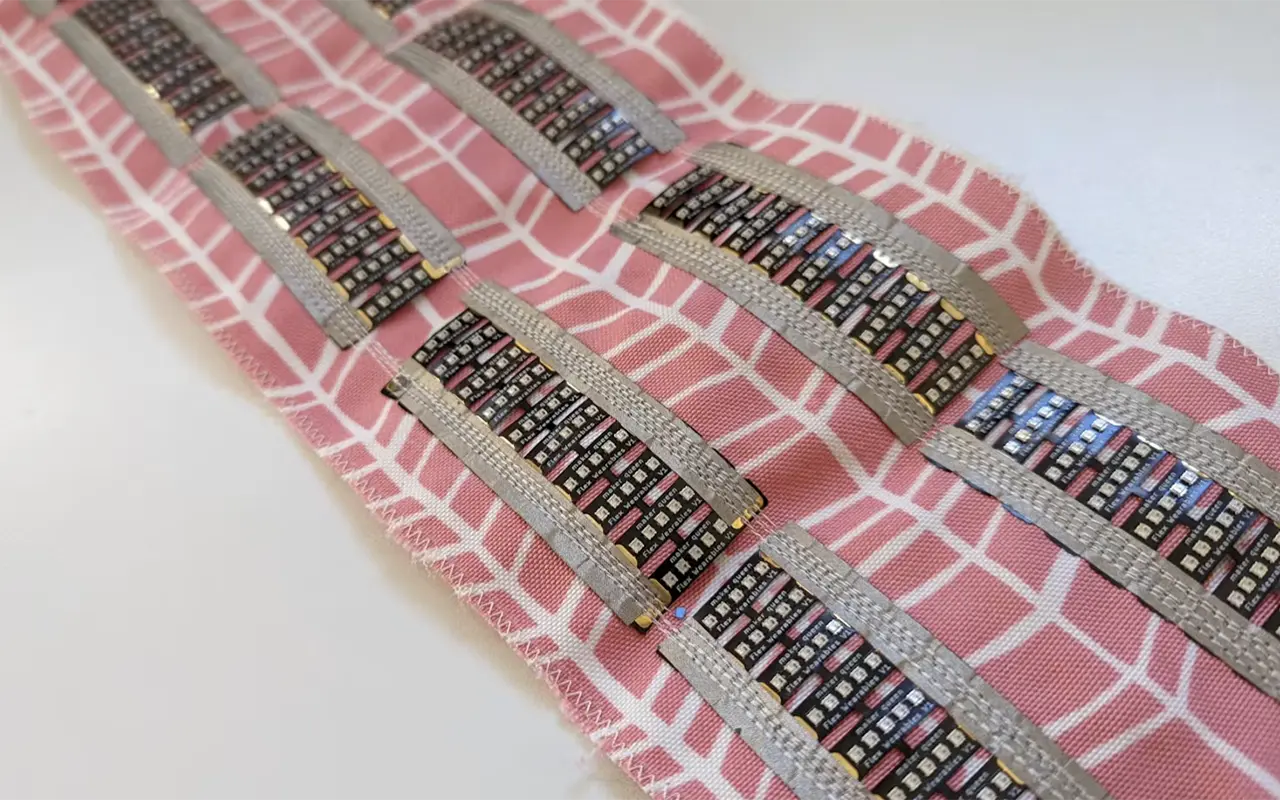
When envisioning a project that integrates LED strip lights with fabric, sewing them directly onto the material is a meticulous and effective approach.
Start by selecting a fabric that complements the LED strips.
Using a running stitch or a whip stitch, you can secure the LED strips onto the fabric, ensuring they lie flat and maintain a consistent appearance. It is essential to use a thread that blends seamlessly with both the fabric and LED strips for optimal aesthetics.
Additionally, reinforcing the stitching at intervals along the LED strip helps bolster the attachment, making it resilient against wear and tear. This method provides not only a visually appealing finish but also a practical solution that ensures the LED strips stay well-fastened even with movement or regular handling.
Using Clips and Hooks
Another reliable method is using clips and hooks.
These useful accessories allow you to attach LED strips without the need for sewing. The clips enable you to hold the LED strips onto your fabric securely, while the hooks can provide additional support. By strategically placing them along the fabric, you ensure a balanced and sturdy setup. Furthermore, using clips and hooks offers the flexibility to easily reposition or remove the LED strips whenever you desire.
They are ideal for quick installations.
Consider the variety of clip and hook materials – from plastic to metal – as they can enhance both functionality and your design’s overall appeal.
This versatile approach empowers you to experiment with different fabric types and layouts, adapting seamlessly to your creative vision. Whether for fashion, home décor, or stage costumes, clips and hooks offer a practical, dynamic solution that underscores innovation and adaptability.
Electrical Safety Tips
Ensuring electrical safety is paramount when incorporating LED strip lights into fabric designs. Always prioritize, as an initial consideration, a cautious approach that underscores safe usage.
First and foremost, choose high-quality LED strips with built-in safety features.
Look for products that have been independently tested and certified. Certifications such as (UL) Underwriters Laboratories endorsement provide reassurance.
Moreover, always read and follow the manufacturer’s guidelines. This includes instructions for voltage compatibility and recommended installation procedures.
Inspect the LED strips regularly for any signs of wear or damage. If any part of the strip appears compromised, replace it immediately to prevent potential hazards.
Finally, never overload your power source with too many LED strips. Proper load management ensures your connections remain safe and reduces the risk of electrical fires.
Voltage and Power Supply
Understanding the appropriate voltage and power supply is crucial when using LED strips on fabric. Using the recommended power sources ensures longevity, safety, and optimal performance.
Ensure that the power supply matches the LED strip’s voltage requirements. Mismatching can cause damage.
It is essential to verify compatibility to avoid overheating or under-powering the strips. The correct setup provides a balance of energy efficiency and illumination.
Reliable power supply options are available to suit various needs. By selecting units with stable voltage output, you can achieve consistent lighting effects, reducing potential risks. Always aim for “plug-and-play” solutions that simplify installation and maintenance.
Waterproof LED Strips
Embracing the innovation of waterproof LED strips opens a world of possibilities for diverse applications. These technologically advanced lights are designed to withstand moisture, making them ideal for both indoor and outdoor use.
Waterproofing safeguards the LEDs, ensuring long-lasting performance in varied environments.
This feature is especially advantageous when considering fabric-based projects that may encounter spills, rain, or humidity. By leveraging waterproof LED strips, you can confidently illuminate drapery, outdoor tents, and costumes without worry.
Moreover, the protective coating on waterproof LED strips ensures they are resistant to dust and debris, further enhancing their durability. It exemplifies an intersection of technology and artistry, allowing creators to maintain safety while executing their visionary projects on fabric.
Finishing Touches and Maintenance
Ending your project with finesse elevates its visual appeal.
Once your LED strips are securely affixed to the fabric, take additional steps to ensure everything is equally well connected and neatly arranged. Tidying up the wiring using cable clips or adhesive strips can prevent tangling or accidental disconnections. Furthermore, consider adding an extra layer of fabric or a transparent screen cover for added protection and aesthetics.
Keep everything well-maintained for lasting beauty.
Be mindful of how you position the lights – not too tight or too loose, ensuring both safety and aesthetics are to their optimum. Regularly inspecting the connections and the LED strips themselves will help catch any early signs of wear, preserving the integrity of your stunning setup.
Continually enhance your project’s lifespan and look by integrating maintenance schedules that include dusting off the strips and checking adhesive bonds. This investment of time and care guarantees enduring brilliance and ensures your fabric-LED masterpiece remains a centerpiece of awe and inspiration, radiating confidence and beauty for years to come.
Conclusion
Integrating LED strip lights onto fabric is safe with proper planning, suitable adhesive, ventilation, and regular inspections. LED technology’s low heat emission allows for creative and safe designs. Continuous maintenance ensures longevity and functionality, enabling enthusiasts to transform fabric into illuminated art confidently.
